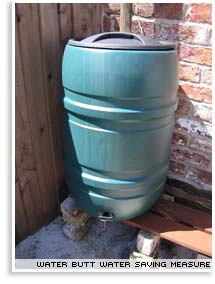We’ve been enjoying some great weather in the UK over the last few weeks. Long hot sunny days with hardly any rain, great for all those who love the summer like myself, but not so good for the water companies that are having to deal with the fact that there is a rising demand for water being made on a slowly declining supply here in the UK.
It took going to India for me to truly appreciate the luxury we take for granted with clean water on tap. An estimated 1.1 billion people in the world don’t have access to clean drinking water putting them at grave risk from diseases like cholera, typhoid, shigella, polio, meningitis, and hepatitis A and E. Every year 1.6 million people die from drinking contaminated water, and 90% of them are children under five.
According to the World Health Organization in 20 years 48 countries will face water shortages affecting up to 2.8 billion people. Furthermore, the United National Educational Scientific and Cultural Organization (UNESCO) predicts that by 2025 the global demand for clean water will increase 20% for agriculture, 50% for industry and a staggering 80% for domestic consumption.
 With that in mind I’ve made an effort to become more aware of the amount of water I use, not because it will save anyone in a developing country, but because I can no longer, in good conscience, be wasteful of this simple yet essential resource. Environmental factors have also played a major role in making me consider just how I use water and how I might be more responsible in that use.
With that in mind I’ve made an effort to become more aware of the amount of water I use, not because it will save anyone in a developing country, but because I can no longer, in good conscience, be wasteful of this simple yet essential resource. Environmental factors have also played a major role in making me consider just how I use water and how I might be more responsible in that use.
As a part of this last week I installed a water butt on one of the down-pipes from the guttering on my roof. It wasn’t an expensive thing to install. All in all the whole set up came to around £30. The water from the 155 litre tank will now be used to water my many house plants as well as the trees and stuff that I’m growing in the garden too.
I’ve long thought that a water butt would be a good idea because the rain water must surely be better for the house plants than tap water. I’m not on a water meter here, but if I was I think that there would possibly be a cost benefit involved too.
With all the concerns over environmental issues and water shortages, I’m surprised new homes don’t come pre-built with water saving devices that could be used to supply the home with non-drinking water. I suppose it comes down to a cost issue. Companies that are building homes want to maximize their profits as much as possible so while the idea of rainwater harvesting might be a good one, an underwater storage tank is not as visible a selling point as say a hot tub or big whirlpool bath.
According to the UK Environment Agency we each use somewhere in the region of around 150 litres of water every single day (that’s nearly 40 gallons!). Imagine how different our lives would be if we had to walk to a well to collect that amount of water. The women I met in Tamil Nadu made two or three journeys a day to a well that was 6 miles away. Watching them carrying giant containers of water on their heads and across their shoulders while often walking barefoot gave me a new appreciation of water and the luxury we enjoy with this essential resources being readily available on tap.
—
No butts
Water saving tips
Stop throwing money down the drain
Rainwater harvesting
Water Situation for England and Wales
World Health Organization
United Nations Educational, Scientific and Cultural Organization
Water war between Canada and the United States possible
Striking peace on troubled Waters – conflicts over water supply
Water Aid – A charity bringing water to the world



Wrote the following comment on Jul 16, 2006 at 1:32 am
long hot sunny days with hardly any rain?
doesn’t sound very appealing to me.
my family has done simple stuff to help save water too. the water butt is a great idea.
Wrote the following comment on Jul 16, 2006 at 9:45 pm
like omg….im like posting on simons like blog.. this is like so cool..
lol sry, had to sound as if im a typical california girl!!:)
so ur having water issues over there? what for, i thought everyone over in europe didnt bath and just drank alcohol…oh wait sry, thats only the french….
Wrote the following comment on Jul 17, 2006 at 3:33 pm
I was just speaking with a friend of mine last night who went to Africa for 3 months and their only water supply had a dead donkey in it. She came back looking pregnant from all the parasites that she was hosting just from 3 months. Crazy.
My mom even catches all the dripping from her Air Conditioning unit to water her garden – very resourceful. And it only cost a couple bucks for the bucket ;)